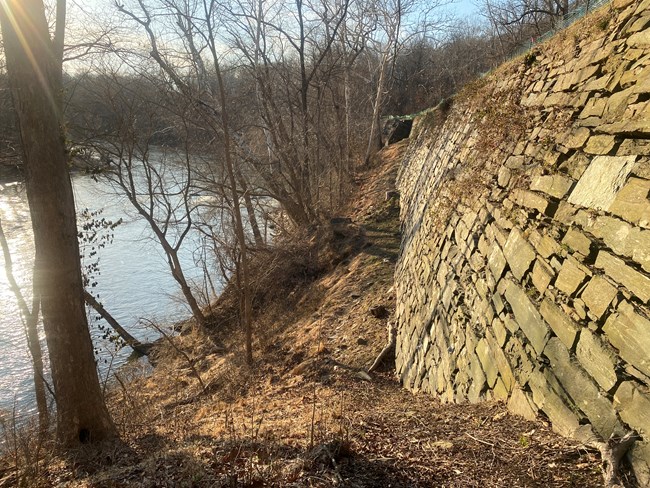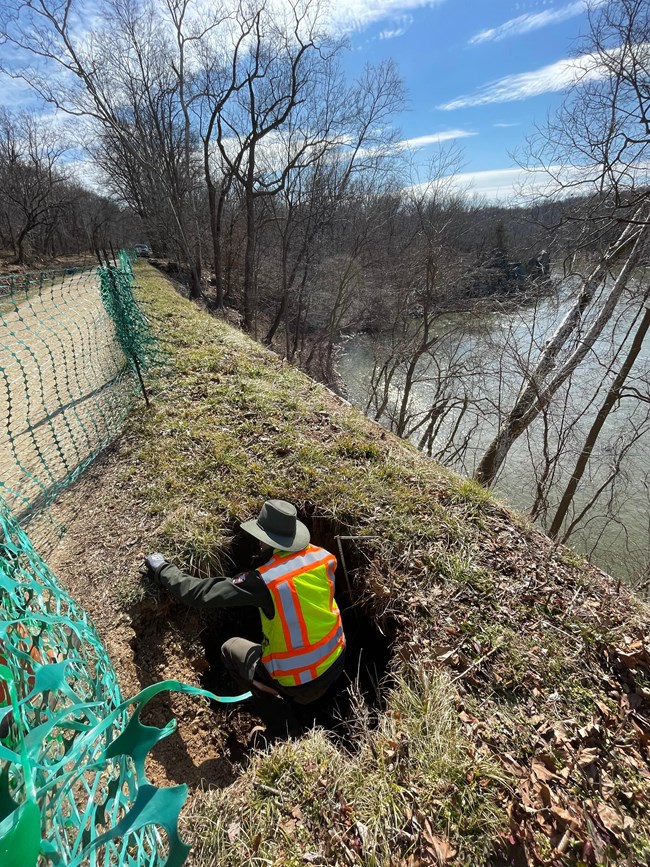
NPS | C&O Canal NHP Engineering Services Team (Reed) 1. C&O Canal Towapth - OPEN between mile 11 and 11.52. Carderock Recreation Area - Parking Lot B (mile 10.75) is CLOSEDThe park plans to stabilize an approximately 1,015 linear foot long historic drylaid stone wall, which varies in height up to 35 feet tall. The wall was originally constructed between 1828 and 1831 and is often referred to as the “Log Wall,” as found in an 1890 Engineer’s Report. This portion of the canal was altered in the 1960s by the installation of the Potomac Interceptor Combined Sewer, which is operated and maintained by DCWATER. In 2015 and 2016 a series of sinkholes formed, necessitating the water in the canal to be lowered throughout a 4-mile stretch, including upstream of Log Wall to Widewater (mile 13.5) and downstream towards Washington, DC. The project’s main goals include maintaining the “Towpath Continuity” of the 184.5-mile-long primary trail system in the park; restoring the flow of water within the canal prism; reducing risks to adjacent infrastructure; and performing stabilization (reduction of sediment load) of some limited reaches of the tributaries emptying into the canal within the project area. CURRENT DETOURS AND CLOSURESThe towpath between miles 11 and 11.5 is OPEN. 
Log Wall Major Project Features Map 
NPS | C&O Canal NHP Engineering Services Team (Noppenberger) FREQUENTLY ASKED QUESTIONS (FAQs)What is the need for the project?The canal liner needs to be replaced to limit leakage through the towpath and wall, and sinkholes need to be repaired to stop their growth and potential impacts to the adjacent wall or towpath. Sediment from tributaries needs to be removed from the canal to restore water flow within this section, while also reducing the weight that the Log Wall is supporting. Accumulated sediment is over two times as dense as air! The historic stone wall needs to be stabilized by performing masonry repairs and by physically buttressing it with dumped stone. This will help reduce the effective height of the wall and reduce future potential instability. What does the project include?The project includes performing stone masonry repairs; removing accumulated sediments from the canal; replacing the canal liner with a geosynthetic system; restoring sinkholes that have developed; stabilizing limited reaches of the tributaries entering the canal minimize future erosion; buttressing the drylaid stone wall with dumped stone; and establishing temporary access and best management practices during construction for erosion and sediment control.
|
Last updated: June 26, 2025


